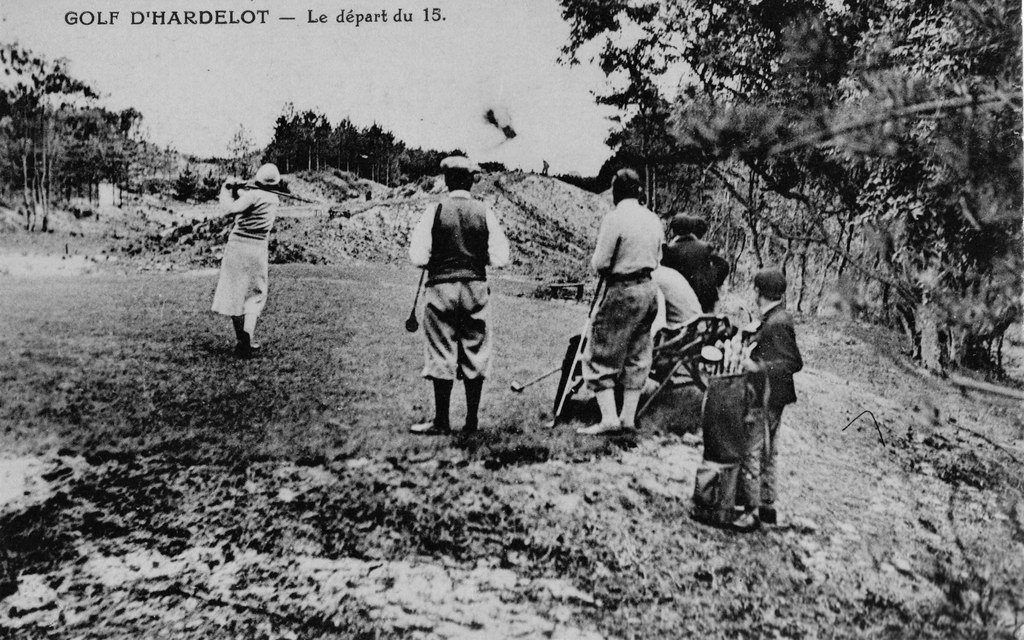
Conveniently located about 30 minutes from the Channel Tunnel in the Pas de Calais, Hardelot is a leafy resort town just south of Boulogne and part of the Cote dí Opale. The resort features two high quality courses. Les Pins is an early 1930s T Simpson design and the Paul Rolin designed Les Dunes was opened in 1991. The town of Hardelot (and nearby Touquet for that matter) is fairly upscale with an unmistakable English influence. The tree-lined housing areas away from the centre are very reminiscent of Pinehurst. So too are the courses in that the great benefit of sandy soil was allowed to be mitigated by poor agronomic choices. In the case of Hardelot, the courses are parkland poa in nature which is in stark contrast to the obvious sandy nature of the sites. As one who is familiar with heathland courses, it is an odd feeling not to find heather among the pines of Hardelot.
I waited for several years before making the trip to the Pas de Calais because the two major courses, Hardelot Les Pins and Le Touquet La Mer, were undergoing transformative work by P Boissonnas and F Pont. The design work at Les Pins is, I believe, more or less complete. An untold number of trees have come out (and more really should go), greens have been expanded, bunkers rebuilt and I think reshaping has occurred in the form of new mounding. It is not hyperbole to state the results are magnificent. I donít know how much the work stuck to the original plans, but there is no question the flair of Simpson remains.
A map sourced by P Boissannas. The nines are now flipped. Notice the areas for housing, the casino, hotel, the clubhouse directly behind 1 & 10 tees and 18 (current 9th) green and the no Avenue du Golf depicted. There were obviously grander ideas when the course was conceived. The house is definitely further right, making the current 18th much shorter than depicted on the map. The map also depicts some tee angles which are not quite the same as today.

Another map (1929) sourced by P Boissonnas is more reflective of what was built.

A par 5, the opener gets the game away in decent fashion. A double doglegger, the green rests in a pack of mounding.

Straight away, the 2nd plays very long for a par 4. Perhaps that is because the hole was converted from a par 5!

A shortish two-shotter, the 3rd increases the interest level with a green which runs severely away from play. The sluggish poa green was very evident here. I had a long putt and would rather have been off the green to use a running 6 iron.

Standing on the tee of the 4th I was beginning to wonder what all the fuss was about. While not bad golf, the opening holes in no way offer an indication of what is to come...and it comes on the 5th. The green drapes down a slight incline which the bunkering admirably masks. Sure, one could say this is a set piece with the intention of making an impression. Yet Simpson pulls off beauty and brains with such panache that it is nearly impossible not to be pleased, at the very least

.

A bit of a different animal comes next. There is less width and OOB hard right for the snaking three-shotter 6th. For those hoping to go for the green in two there is plenty of sand to thwart the urge. This image was sourced by P Boissonnas. Notice the ball spotter on the dune.

To the left (right in photo) of the hole there is a blind channel which will funnel shots to the rear of the green.

The purple patch continues with the 7th, another picture perfect postcard hole. I was completely deceived by the green in that I thought it was wide and fairly shallow. The green is actually deep and sharply rises uphill from about halfway to the rear. Any tee shot left and long of this hole location is in trouble.


More to follow.
Ciao